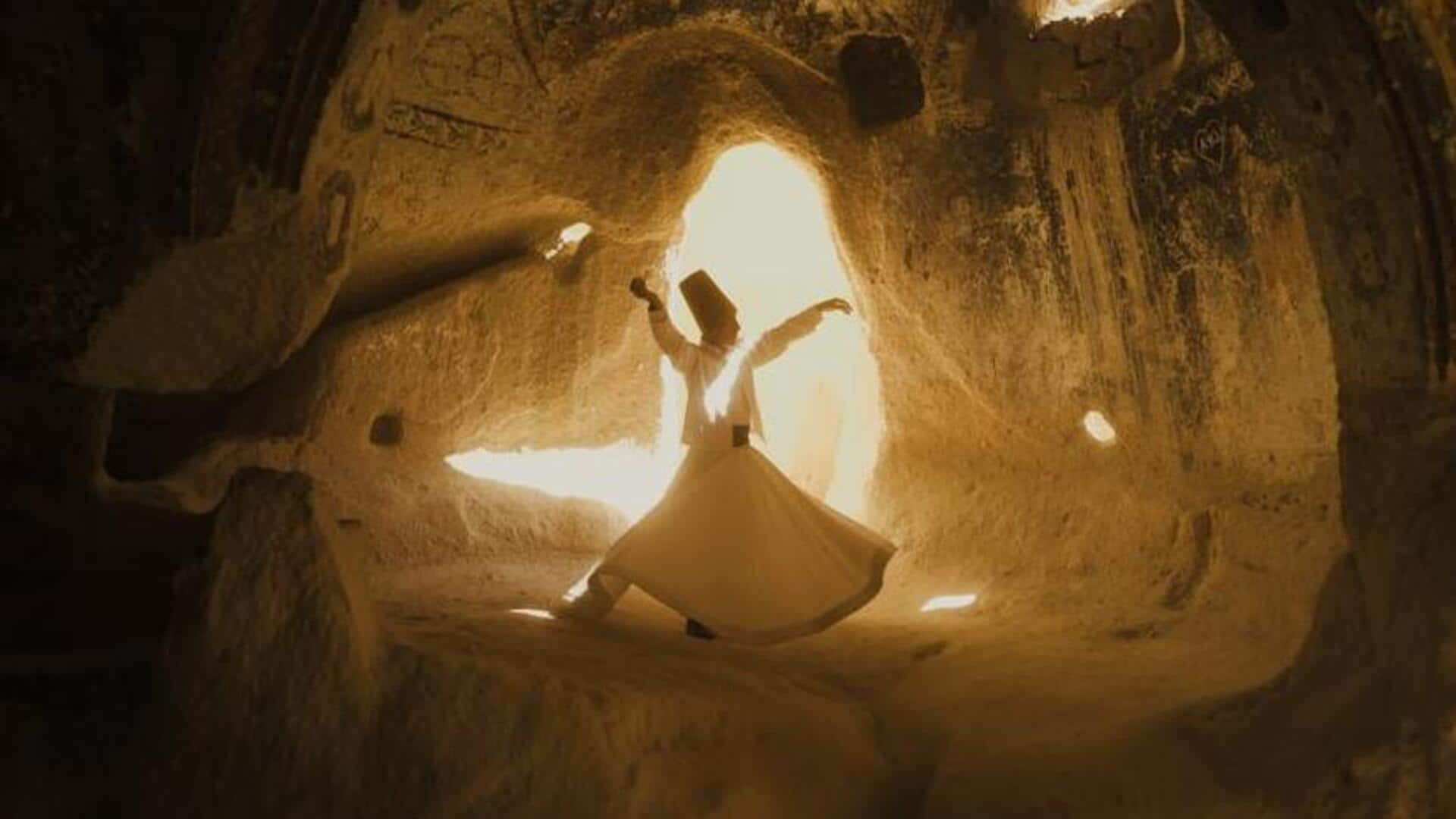
The whirling grace of Sufi dance exploration
What's the story
The Sufi dance, or Sama, is a centuries-old form of worship rooted in the mystical branch of Islam, Sufism. It transcends the realm of mere artistic expression, serving as a spiritual journey toward divine love. The key aspect of Sufi dancing is whirling, wherein practitioners spin their bodies in repetitive circles, reflecting the planets in the solar system revolving around the sun.
Roots
Origins and significance
The Sufi dance originates from the Mevlevi Order in Konya, Turkey, founded by the followers of Jalaluddin Rumi. A 13th-century Persian poet and mystic, Rumi taught that music and dance could be pathways to experiencing divine love. The whirling dervishes, as they are called, do not perform this dance for entertainment. Instead, it is a form of dhikr (remembrance of God), with each movement carrying deep symbolic meaning.
Ceremony
Understanding the ritual
The Sufi dance ceremony starts with a eulogy for Prophet Muhammad. Then, the drumming represents God's command "Be." The participants engage in a communal recitation before they start whirling. Dressed in white robes (shrouds of death) and tall hats (tombstones of the ego), they are ready. As they whirl with one hand raised to receive divine grace and the other lowered to distribute blessings to earth, their spiritual journey begins.
Harmony
Musical elements
Music is the heartbeat of Sufi dance. Accompanied by traditional instruments like the ney (reed flute), oud (lute), qanun (plucked zither), and percussion, dancers move in harmony with the rhythm. These melodies, rooted in classical Turkish or Persian motifs (depending on the region), serve as a hypnotic backdrop. The music is a key element in creating the trance-like state experienced by both performers and audience members.
Practice
Learning Sufi dance
If you are keen to learn Sufi dance, ensure you do so with reverence for its spiritual origins. Numerous cultural centers globally provide workshops under the guidance of seasoned practitioners. These experts not only teach the techniques but also educate learners about its history and symbolism. Mastering the equilibrium between physical movement and spiritual meditation demands patience and commitment.